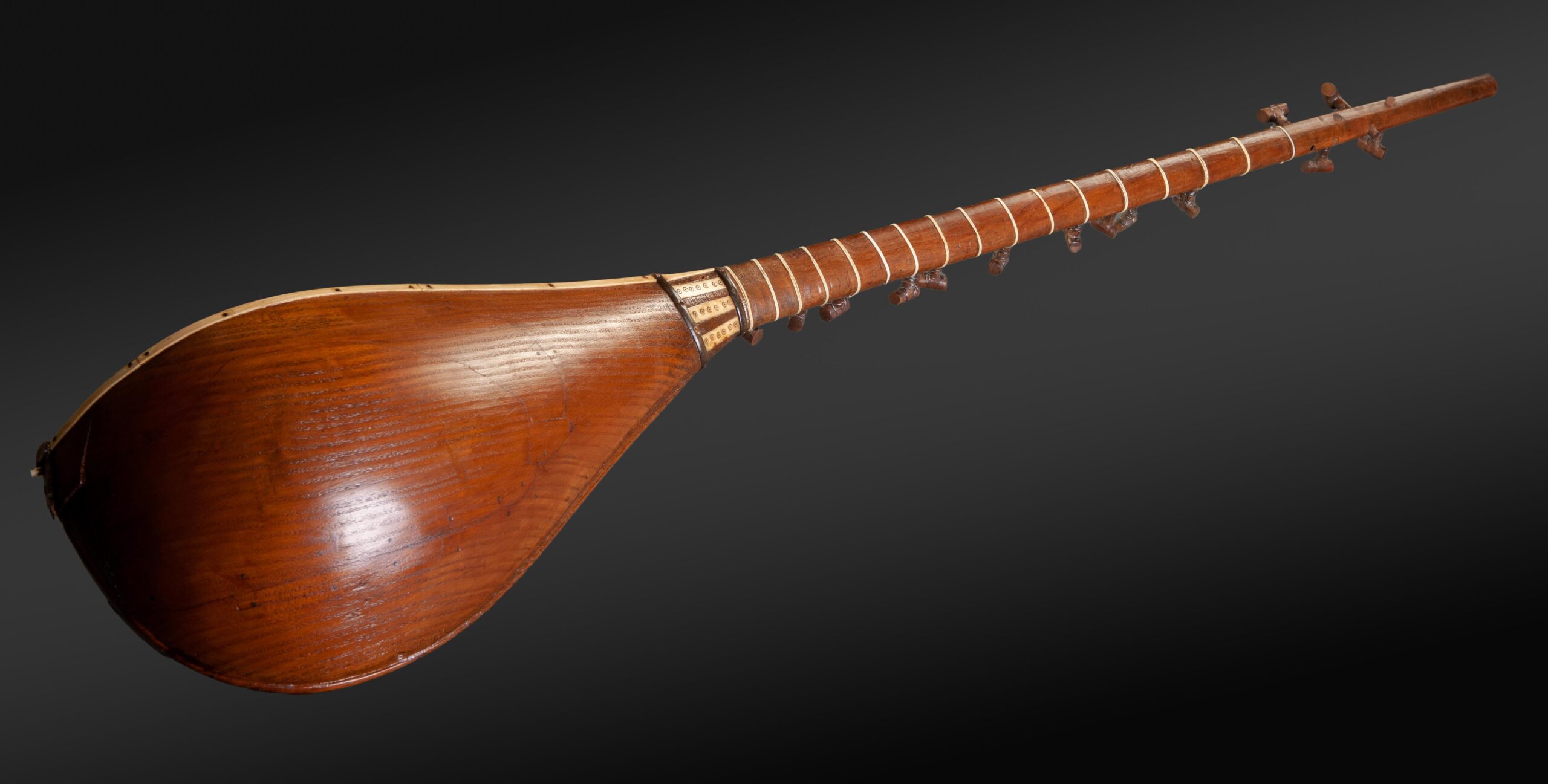DOTAR (Model n°3)
Iran, Khorasan province.
Afghanistan, Herat province. 20th century.
This is the third model of long-necked lute whose brief description we give here:
The classically crafted body, hollowed out of a block of mulberry, is recognizable by the central rib which runs along the back of the instrument.
The mulberry table is pierced with small holes delimiting geometric figures and bordered around its perimeter with a bone filet.
The fingerboard is decorated with geometric bone patterns and twisted brass purfling. We find the bone veneers on the heel of the neck typical of this regional style.
Four metal strings. We can see the filled hole of a fifth peg; perhaps due to a drilling error…
Ten sympathetic strings tuned along the neck.
The influence of popular Afghan music has led to an evolution of this type of dotar, on the other side of the border, in the surroundings of Herat in western Afghanistan. It was characterized in particular by an increase in the size of the instrument, the addition of playing strings, and what is the case here, sympathetic strings.
Length: 108.7cm Width: 16.5cm Depth: 17.5cm
Materials: Materials: Mulberry, fruit wood (apricot), bone, brass…
The cracked bottom of the body has been repaired.
Bibliography:
Jean During: “T 2, p.122) “the Grove dictionary of Musical Instruments” Laurence Libin, Editor in Chief. T.2, pp. 122… Oxford University Press 2014.
Jean During: “The dotâr family in Central Asia. Organological and musicological survey,” Porte Akademik. Organoloji sayasi, Istanbul, 2012



